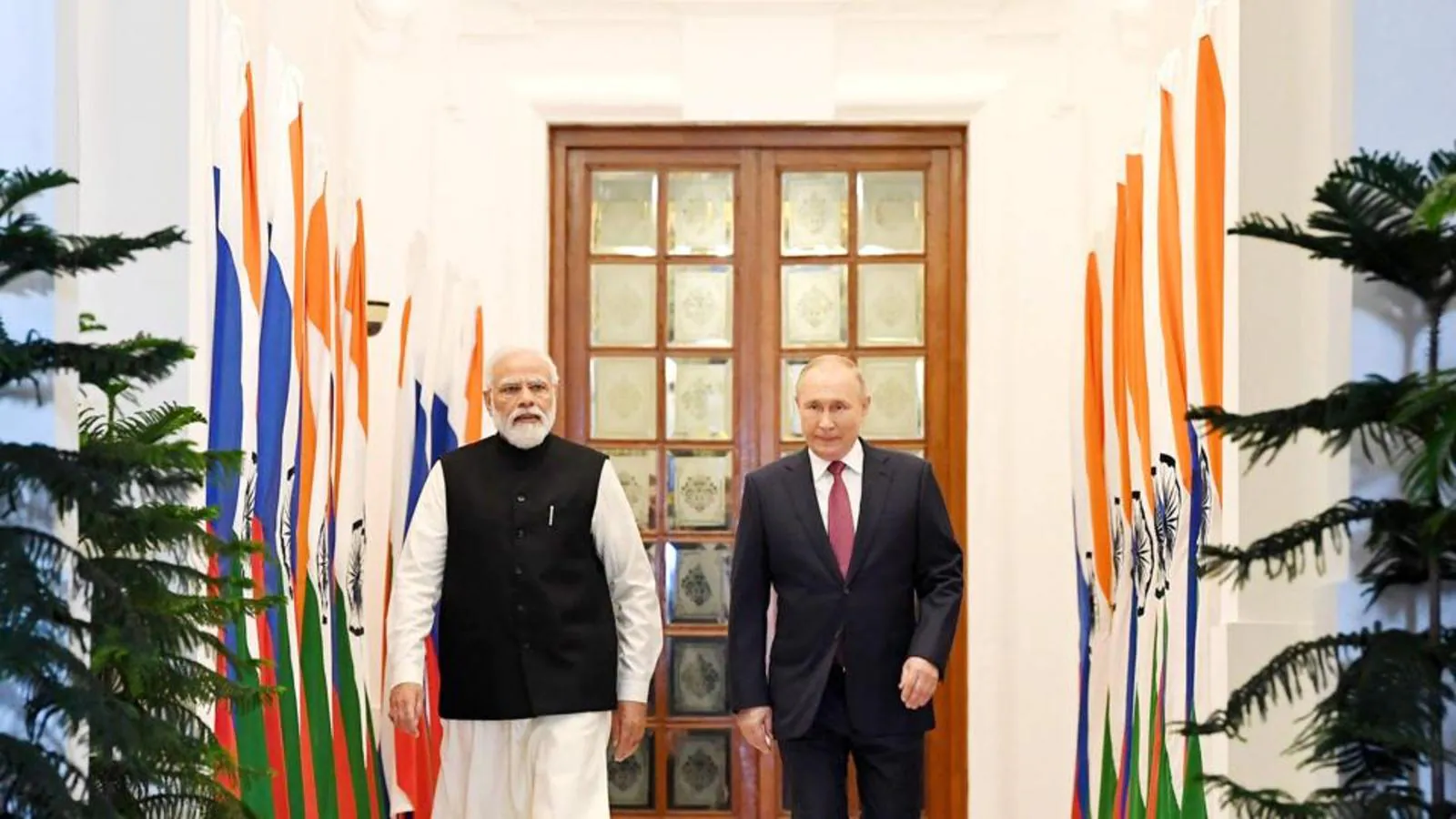We are seeing and getting surprises about a true democratic country like India, not condeming russian aggression. India is not voting against any UN resolutions against Russia even the entire world knows Russia is aggressor. Is India favouring Russia because of something? Is India afraid of Russia? Is it that Russia is friend for many decades? India is against any kind of aggression and land grabbing by any country. It was one of the founding members of Non-aligned countries. India faces from China, the same kind of aggression that Ukraine faces from Russia. Naturally India should have objected and pursued a course of condemning Russian Aggression. Bur why is India behaving in this particular case in a different manner than what is expected of a country built upon the fundamentals of non-violence and non-aggression. Why India is not raising voice against Ukraine invasion by Russia?
Why India is not raising voice against Ukraine invasion ?
To understand, out of many countries, India is one country that has long ties with Russia. Russia helped India in times of its real needs. We look at the major historic events.
End Portuguese Colony in Goa:
In 1961, after India used its military to end Portuguese colonial sovereignty over Goa, Daman and Diu, for example, the US, the UK, France, and Turkey put forth a resolution condemning India and calling upon its government to withdraw its troops immediately. But the Soviet Union opposed the proposal.
Kashmir resolution:
The Soviet Union vetoed UN Security Council resolutions in 1957, 1962 and 1971 that called for international intervention in Kashmir, insisting that it is a bilateral issue that needs to be solved through negotiations between India and Pakistan. And it took a similar stance on the Indo-Pak conflict in general. Such a stance was appreciated across the political spectrum in India
Bangladesh Crisis:
India faced an unacceptable refugee burden from Bangladesh in 1971. The reason for the refugee’s number were Pakistan’s suppression of its own people in East Pakistan. The US and Britain as well as China were on Pakistan’s side in the conflict, they didn’t understand the ground realities India was facing in infrastructure and humanitarian stresses, when millions of people fled to India from East Pakistan.
In Indira Gandhi’s regime India signed a ‘Peace and Friendship’ treaty with the Soviet Union on August 9, 1971, which later laid the foundations of a glorious victory in the war for liberation of Bangladesh that took place three months later.
Operation Chengiz Khan, the preemptive strikes were carried out by the Pakistani Air Force (PAF) on the forward airbases and radar installations of the Indian Air Force (IAF) on the evening of 3 December 1971, and marked the formal initiation of hostilities of the Indo-Pakistan War of 1971. The operation targeted 11 of India’s airfields and also included artillery strikes on Indian positions in Kashmir. The targets were the Indian Airbases of Amritsar, Ambala, Agra, Awantipur, Bikaner, Halwara, Jodhpur, Jaisalmer, Pathankot, Bhuj, Srinagar and Uttarlai and air defence radars at Amritsar and Faridkot. The Indian response was a very clever defensive military strategy in the western theatre, while a massive, coordinated and decisive offensive thrust into the Eastern theatre to liberate East Pakistan. On 5 December, United States began attempts for UN-sponsored ceasefire, which were twice vetoed by the USSR in the security council.
Quickly India extended her recognition of Bangladesh on 6 December.
US despatches Seventh Fleet to take on India, Uk sent Eagle: On 8 December, Washington received intelligence reports of Indian offence in East Pakistan.
Immediately the United States dispatched a ten-ship naval task force, the US Task Force 74, from the Seventh Fleet off South Vietnam into the Bay of Bengal.
The task force was to be headed by USS Enterprise, at the time and still the largest aircraft carrier in the world. The Enterprise weighing 75,000 tonnes was the largest nuclear-powered carrier in the world with 70 fighter aircraft. India’s Navy was led by the 20,000 tonne INS Vikrant with 20 fighter aircrafts. At the same time, UK dispatched its aircraft carrier HMS Eagle in the Arabian Sea. If went according to the plan, India would be caught in ‘pincer’ attack. The US in Bay of Bengal, UK in the Arabian Sea, while Pakistan on land, India was caught. The US and UK hoped that China would also attack India.
India quietly sent Moscow a request to activate a secret provision of the Indo-Soviet security treaty, under which Russia was bound to defend India in case of any external aggression.
To counter this two-pronged British-American threat, Russia dispatched a nuclear-armed flotilla from Vladivostok on December 13 under the overall command of Admiral Vladimir Kruglyakov, the Commander of the 10th Operative Battle Group (Pacific Fleet).
The Russian fleet comprised a good number of nuclear-armed ships and atomic submarines, but their missiles were of limited range (less than 300 km). Hence, to effectively counter the British and American fleets the Russian commanders had to undertake the risk of encircling them to bring them within their target. This they did with military precision.
At this point, the Russians intercepted a communication from the commander of the British carrier battle group, Admiral Dimon Gordon, to the Seventh Fleet commander: “Sir, we are too late. There are the Russian atomic submarines here, and a big collection of battleships.” The British ships fled towards Madagascar while the larger US task force stopped before entering the Bay of Bengal.
Meanwhile, India led Allied Forces made rapid advance assisted by Mukti Bahini, and Pakistan forces in East Pakistan surrendered in Dhaka on 16 December 1971, in what remains to date the largest surrender of armed personnel since the II World war. The 1971 war is considered to be modern India’s finest hour, in military terms. The quick reaction of the Indian army, navy, and air force; a brass led by the legendary Sam Manekshaw and ceaseless international lobbying by the political leadership worked well to set up the victory and liberation of Bangladesh.
Strategic Partnership:
In 2000, Russia’s President Vladimir Putin and then Prime Minister Vajpayee signed a “Declaration of Strategic Partnership”. In 2010, marking a decade of this strategic partnership, both countries signed the “Special and Strategic Partnership”. As part of this special partnership, Russia reaffirmed its pro-India stance on Kashmir. In 2019, when India scrapped Article 370 of its constitution that gave Jammu and Kashmir special status, the Modi government faced severe criticism in the international arena, but Russia once again deemed this to be an “internal matter” for India.
WHAT DID INDIA DO TO SAFEGUARD USSR OR RUSSIA?
India compromised to its stand many times when Russia did something internationally wrong.
In 1956, India refrained from publicly condemning the Soviet Union’s violent suppression of the Hungarian revolution – this despite India’s then Prime Minister Jawaharlal Nehru being critical of Moscow’s actions in private.
in 1968, when Soviet forces invaded Czechoslovakia to crush the Prague Spring, then Prime Minister Indira Gandhi gave a disapproving speech in the lower house of the Indian parliament but refrained from criticising Moscow on an international platform. India abstained from a subsequent vote on a resolution condemning the invasion.
When the Soviet Union entered Afghanistan in 1979 to prop up the new pro-Soviet regime, many in India – including Prime Minister Charan Singh – strongly opposed the invasion. However, having been the beneficiary of many Soviet vetoes across the decades, India once again abstained from voting in the UN General Assembly resolution condemning the Soviet Union. It was the only non-aligned country to do so.
Continuing with this pro-Moscow voting record in the 2000s, India voted against a UN Human Rights Commission resolution that condemned Russia’s “disproportionate use of force” in the second Chechen war.
In 2008, along with North Korea, Iran, and Myanmar, India also voted against a UN General Assembly resolution that declared the “right of return” of those displaced by Russia’s campaign in Abkhazia.
India also abstained from voting in the 2013 and 2016 UN General Assembly resolutions critical of the Assad regime supported by Russia.
In 2014, India abstained from the UN General Assembly resolution condemning Russia’s invasion of Crimea and.
In 2020, India voted against a Ukraine-sponsored UN General Assembly resolution condemning human rights violations in Crimea.
India and Russia have undisturbed a cultural, military and economic friendship stretching for 80 years.
Rocket block:
Every inch of Indian Space Research was blocked by west. For example Indian Rocket development badly needed the liquid propulsion system and for that Cryogenic Engine technology was critical. Russia offered to supply cryogenic engine technology. West exerted pressure on Russia not to supply.
The Soviet Union was India’s largest trading partner until its collapse. Soviet economic contributions and technical know-how were essential in the establishment of India’s domestic industries, including oil and gas and mining. The Soviet Union also helped ensure India’s energy security. The first Indian citizen to travel to space, Rakesh Sharma, had done so through the Soviet Union’s Intekosmos programme.
Russian historians, philosophers and artists have expressed their admiration and respect for revolutionary and literary Indian figures. During the height of the Cold War, Hindi films were dubbed into Russian and were immensely popular among Moscovites. The Soviet Union also went to great lengths to ensure that Russian classic texts were available in India, setting up publishing houses that were solely focused on the Indian market.
As Deepa Bhasthi recounted in his essay, “For a generation that came of age at the cusp of that very strange period in India when socialism ended and capitalism was becoming wholeheartedly embraced, these books remain a kind of sentimental paraphernalia. The world depicted in the Russian stories was an exotic one … different in weather, names, food, and façades. But the affordable books made it a world its readers felt able to touch, to sense and know well.”
The most enduring aspect of the Indo-Russian ties has been the military cooperation between the two countries.
The Soviet Union is said to have supplied India during the years with enough military hardware to equip several fleets. This has included “aircraft carriers, tanks, guns, fighter jets, and missiles”. The Soviet Union was also central to the creation of the Indian navy and, in the 1980s, it even leased a nuclear-powered submarine to India.
This Soviet-era legacy has persisted post-1991. Russian-origin weapons are believed to account for 60 to 85 percent of the hardware of the Indian armed forces today. According to the Stockholm International Peace Research Institute, Russia was the second-largest global arms exporter to India between 2016 and 2020. As its largest importer, India received 23 percent of Russian hardware. Admittedly, compared with 2011-2015, exports to India dropped by 53 percent. However, there are several recent deals in the works. This includes a deal to buy state-of-the-art air defence systems, a Russian proposal to build AIP-powered conventional submarines, as well as a plan to lease two Russian nuclear-ballistic submarines.
When Russian Oil is banned by west, India came to support Russia and bought plenty of oil, defeating the purpose and procedure of sanctions, arguing that its economic interest is best served by these purchases.
There is an underlying problem not understood by western countries. They try to keep the value of their currencies high. Especially US$. The entire world calculates GDP, Per capita, purchase power parity, etc. in terms of US$. All other country currencies are at the mercy of US$. It doesn’t mean that when US$ falls, the other currencies also fall- No that never happens – But when the US$ raises, the other currencies fall. So, there is always western country commodities and services are costlier to procure for lesser privileged countries. West may say they got the strategic arms and ammunition supply. But there are strategic considerations, supply rules and conditions and cost factors that deter emerging economies from procuring from west.
We consider Cryogenic Engine technology and what USA and USSR did when India wanted to acquire this technology
The United States had long been opposed to the transfer of cryogenic technology to India. Cryogenic technology is a highly advanced form of technology that is used to launch satellites into space. It is a complex and expensive technology that requires a high level of expertise and resources to develop and maintain.
The United States had expressed concern that the transfer of this technology to India could lead to the proliferation of nuclear weapons. India is not a signatory to the Nuclear Non-Proliferation Treaty, and the United States is concerned that the transfer of this technology could be used to develop nuclear weapons.
The United States was also concerned that the transfer of this technology could lead to a destabilization of the region. India and Pakistan have a long history of conflict, and the United States was concerned that the transfer of this technology could lead to an arms race between the two countries.
The United States was also concerned that the transfer of this technology could lead to a loss of American jobs. The development and maintenance of cryogenic technology requires a high level of expertise and resources, and the United States was concerned that the transfer of this technology could lead to a loss of American jobs.
Finally, the United States was concerned that the transfer of this technology could lead to a loss of American technological superiority. The United States has long been a leader in the development of cryogenic technology, and the transfer of this technology to India could lead to a loss of American technological superiority.
For these reasons, the United States has long been opposed to the transfer of cryogenic technology to India. The United States believes that the transfer of this technology could lead to a number of negative consequences, and has thus taken a firm stance against the transfer of this technology to India.
But US offered Cryogenic Engines to India secretly but at exhorbitant cost, but without technology transfer -If taking that offer, India had to be ever reliant on USA for the cryogenic engine supply:
But the reality behind the scenes was quite different. It was the Americans who had offered them the very same technology and had made no objections throughout the years 1988-92 when the arrangements had begun.
So does that mean the Americans were trying to achieve the dual aim of crippling both the Indian and Russian space programmes? Well, here’s Glavkosmos’ version.
Glavkosmos official Nikolai Semyonov accused Washington of attempting to destroy Russia’s space industry. “When working out the contract, we used the MTCR guidelines in reaching the contract with India…what is more, Indian partners said at the start and later confirmed that they would use our technology exclusively for peaceful purposes.”
PRICE
At the time of the Cold War, the price of cryogenic engines in the United States and the Soviet Union varied significantly. In the United States, cryogenic engines were expensive, costing up to $1 million per unit. This was due to the high cost of materials and the complexity of the technology. In the Soviet Union, cryogenic engines were much cheaper, costing around $100,000 per unit. This was due to the Soviet Union’s access to cheaper materials and the fact that the technology was less complex.
USSR secretly provided some cryogenic engines; India by disassembling learnt the technology
In the late 1980s India was looking to develop a massive rocket to launch satellites into 24-hour orbit. India first talked to Japan but nothing came off it. Hearing of these overtures, the Indians were approached first by General Dynamics Corporation, which offered an American engine. But the cost was prohibitive as was an offer shortly thereafter from Europe’s Arianespace.
“Just then a third approach came, this time from the Soviet Union, offering two engines and technology transfer for the more reasonable price of $200 million,” writes Harvey.
The Russians were offering a secret engine, the RD-56 or KVD-1, built by the Isayev Design Bureau. The KVD-1 had unsurpassed thrust and capabilities and NASA had nothing that could match the Russian engine for years. In fact, the rocket engine was originally developed as part of the Soviet manned moon landing programme as far back as 1964.
On January 18, 1991 the Indian Space Research Organisation (ISRO) inked an agreement with the Russian space agency Glavkosmos for the transfer of cryogenic technology. Following the collapse of its Soviet empire, Russia was under considerable American influence. In this backdrop, both Glavkosmos and ISRO anticipated the United States would try and stymie the deal.
So Glavkosmos and ISRO drew up Plan B – outsource the manufacture of the cryogenic engines to Kerala Hi-tech Industries Limited (KELTEC). The arrangement was designed to get around the provisions of the Missile Technology Control Regime (MTCR) – a Western cabal that aims to deny ballistic missile technology to non-Western countries, especially India.
Aleksey Vasin, officer-in-charge of cryogenic technology in Glavkosmos, and ISRO Chairman U.R. Rao – reckoned that if Russian cryogenic technology was passed on to ISRO via KELTEC, technically it would not be a violation of the MTCR.
So, you understood how close Russia and India are friends for many decades. The question of Why India is not raising voice against Ukraine invasion is resolved around complexity of Russian Indian Relationship .
WHAT ARE THE CHOICES FOR INDIA ?
West talks about allowing fair competition ends when its industries are affected. In advanced fields west scuttles competition of other countries.
World powers want to create unipolar world – Now they become a block USA lead west and Nato vs Russia-China-NorthKorea. India is still in a dilemma to find its alliance. India can’t align with a block with China . India has to naturally turn towards west – but the past colonisation and economic squandering of colonial rules and hot-cold high cost American regimes are standing in its way to joining either of the blocks. India has got on its side the biggest asset in the world that was exploited by colonial rulers, the human resources. Rightly India insists on technology transfers as a purchase condition. It avoids the copied, cloned chinese equipment. On Russian procurement only there are question marks remain.
Some agreement with Russia to replace obsolete Tanks, ammunitions, Air Crafts with latest ones is priority for India- but how can Russia supply them; when in Ukraine war Russia loses Tanks in thousands. How long will they take to manufacture spares? How long they will take to produce and supply advanced tanks to replace obsolete tanks India has. That is the point of discussion for India to trigger a peace talk. Which Russia is better for India and other countries which purchase defence supplies from Russia – Is it the Russia who is concentrated on production and supply OR the Russia that is consuming its arsenals at the rate where replacement can take many many years, without fulfilling its obligation to its purchasers? India is in a better position to mediate between Ukraine and Russia when it started asking these questions.





